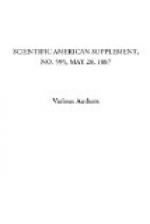Fig. 2 represents an apartment apparatus designed to be placed in front of a table or desk, in order that one can fan himself while eating or writing. Being mounted upon casters, it can be readily moved about from one place to another. At the extremity of a wooden support, whose height may be varied at will, there is arranged a flexible fan whose handle is fixed near a pulley. A small piece of lead forms the counterpoise of the fan, which is thus completely balanced. Over the pulley runs a cord, each end of which is attached to a pedal. It will be seen that the alternate motion of these pedals must cause a rotation of the pulley in one direction or the other, and that consequently the fan will rise or fall more or less rapidly, and give a quantity of air that varies according to the rapidity with which the toes are moved.—La Nature.
* * * * *
PUNKAS.
[Footnote: Extract from a lecture recently delivered at Bombay.]
By J. Wallace, C.E.
The function of a punka is to cause a current of air to pass the human body so that the animal heat may escape more rapidly. This has nothing to do with ventilation; for if the punka were used in a closed room, it would still produce a cooling effect on the skin.
Let us for a moment examine into what takes place in this operation, for a clear idea of the cause of our sensations of heat is absolutely necessary to enable us to go directly to the simplest and best form of remedy. The heat we feel, and which sometimes renders us uncomfortable, is produced within us by the slow combustion of the food we eat.
This heat continues to escape from the whole surface of the body during the whole lifetime, and if anything occurs to arrest it to any great extent, the result is fatal.
In cold weather, and especially when there is much wind, the animal heat escapes very rapidly from the body, and extra clothing is used, not for any heat it imparts, but simply because it interrupts the escape of the heat, and thus maintains the temperature of the skin—that part of us which is most sensible of change of temperature. It is a wonderful fact that the heat of the interior of the body varies very little in a healthy man between India and Greenland.
The skin may bear a good many degrees of change of temperature with impunity, but the blood will only suffer a very small variation from the normal temperature of 98-4/10 deg. Fahrenheit without serious consequences.
Well, to keep the skin at an agreeable temperature in India we generally wear a minimum of clothing, and when there is no breeze, we try to produce one with the punka.
The escape of animal heat from the body forms a subject which is much more complicated, and much more important, than the one we have met to consider, but it is impossible within the limits of our time to refer to it, except in the measure that is strictly necessary to elucidate the principles that should control the construction of the punka.




